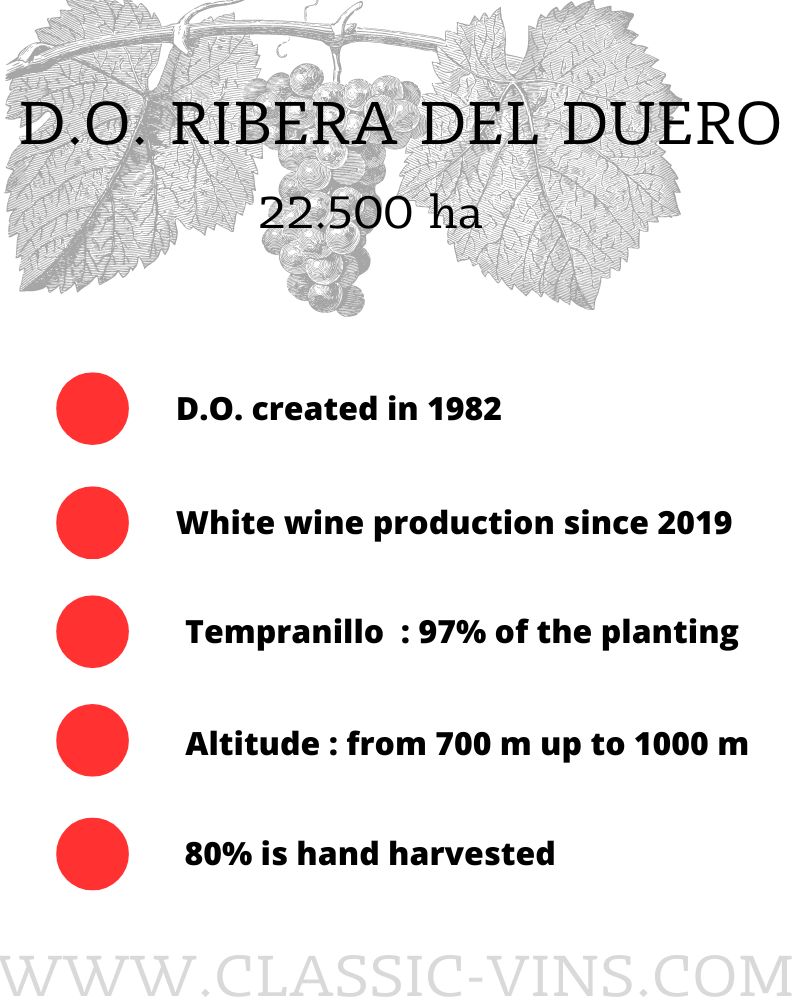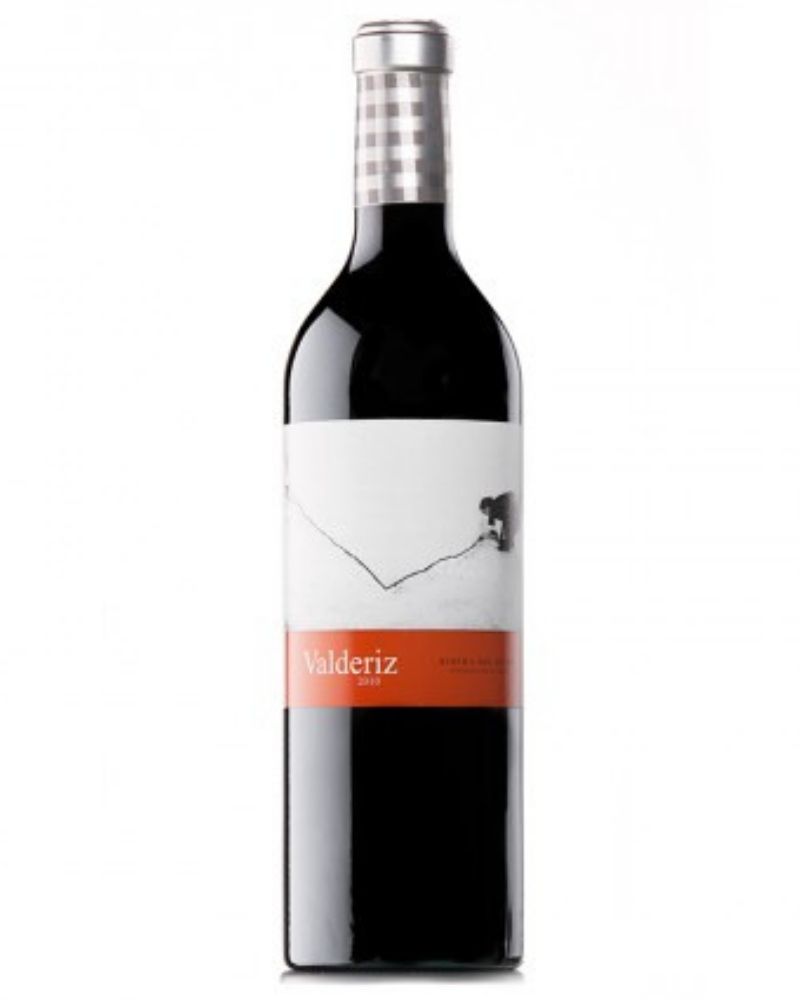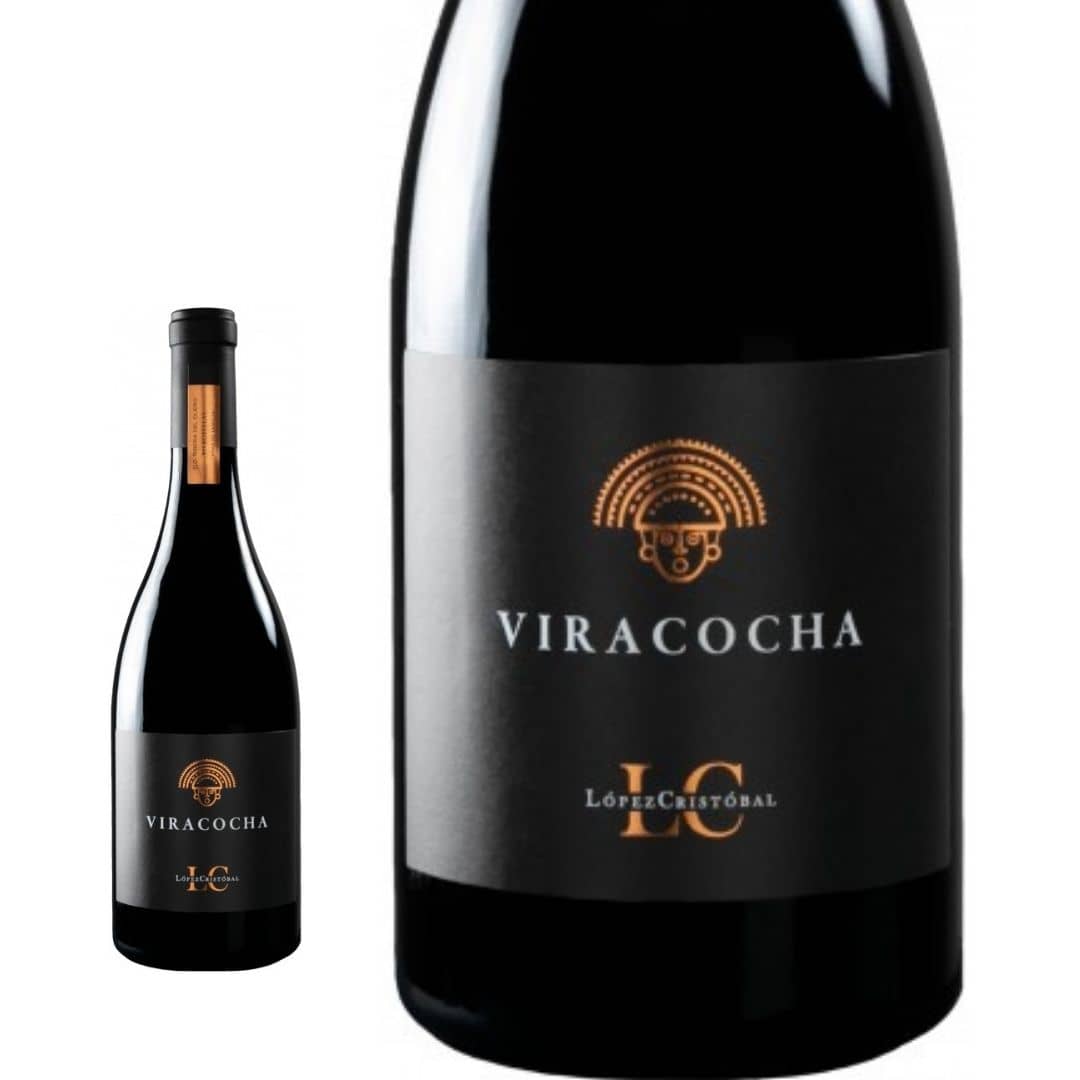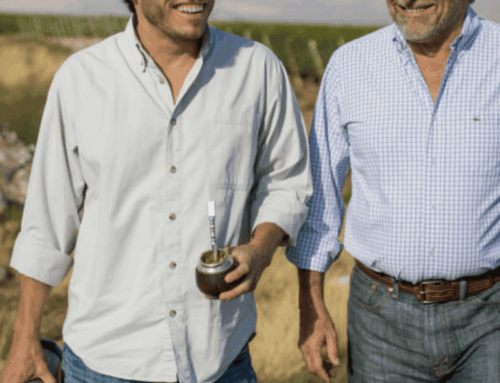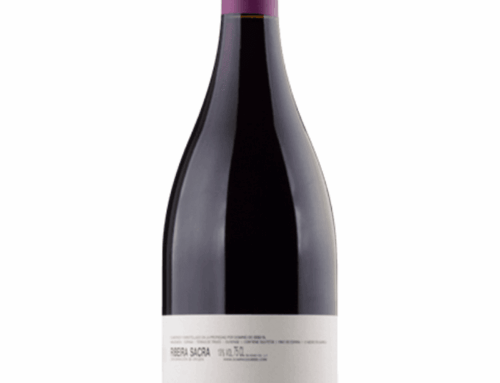Ribera del Duero’s wines
26.000 Ha
D.O. created in 1982, in 2019 white wines were included.
Still young.
Effectively in 1982 the region was officially granted as a D.O., and more recently in 2019 they allowed white wine production from Albillo mayor. As one of the most important rivers in Spain, the almost 900 Km long Duero River travels through many other well-known wine regions: Rueda, Toro and Port. Just the like Spain’s longest river Tajo, it crosses Portugal to finish its journey into the Atlantic Ocean. Additionally, and unfortunately for Spaniards the Duero River is not navigable. A shame, it could have helped its commerce in ancient times.
Ribera del Duero’s climate
- warm continental climate
- Temperatures can get as low as -20 degrees Celsius up to 42 degrees Celsius
- Low rainfall: 400-500 mm/year
- Altitude: 700m to 1100m above sea level
- Important diurnal temperature variation
Ribera del Duero’s soil types
Many soil types can be found, most commonly
- Limestone
- Clay
- Silt
- Sand
- Gravel
The late Javier Zaccagnini once described the soils to us. Apparently, the layer of clay that cover the limestone in the western part is thinner than in the middle part of Ribera del Duero. As well, the far eastern part of Ribera del Duero is higher in altitude reaching 900/1000 m above sea level, but also sand is a significant part of the soil make up, thus most vines are ungrafted as the Phylloxera has not been able to penetrate that area! Furthermore, many vineyards are covered with gravels, especially those ones located near the river. Unfortunately, it is hardly possible to simplify the great diversity of soils found in Ribera del Duero.
Ribera del Duero’s Grape varieties
Unsurprisingly Tinta del País is the main variety and Galo from Lopez Cristobal estate told us that all red wine must contain at least 75% of it. In other words you will never find 100% cabernet Sauvignon with Ribera del Duero’s name on it. Of the 26.500 hectares of vines, Tempranillo (Tinta del Pais, same variety different name) is the most planted one covering 97% of the vineyards!
As it happens with other varieties although their DNA is identic, some small but important nuances will help you to understand the differences. Juan, co-owner of Bodegas Valderiz, loves to insist that Tinta del pais and Tempranillo (from la Rioja) are just not similar. First the berry in Ribera del Duero is usually smaller, with less juice. Second the skin is thicker (potentially more colour) and last valuable point clusters are totally different. While clusters in la Rioja exhibit a central part with two arms, in Ribera del Duero Tinta del Pais has just one arm.
Moreover, Cabernet Sauvignon, Merlot and Malbec are authorised. They were introduced by the great Eloy Lecanda (Vega Sicilia) in the 1850’s. Some Garnacha vines are also planted.
When it comes to white wine, Albillo Mayor is the new rising star! An extremely confidential production. Lopez Cristobal albillo Mayor is a fantastic introduction to this obscure and unknown variety. A seductive unctuous white, dry, burgundy-like that is aged 3 months in French oak from 50 years vines planted at 770 m. If you like lee-aged or gently oaked chardonnay or Godello, you should have a go.
Old Vines
Almost 9% of the all the wines in Ribera del Duero are over 80 years old! Neo is produced from at least 50 old vines Tempranillo and aged 30 months in French oak. Resulting in a tremendous rich, bold style, so common in Ribera del Duero.
Ribera del Duero are Consumed too young
On one hand debunking new wines in Ribera del Duero is always possible, as the region is highly dynamic and relatively young. On the other hand, prices are skyrocketing.
In 30 years, the way we consume wine has dramatically changed, producers had to adapt their winemaking skills. New oak, either French or American, is the tendency although more and more winemakers are trying to diminish its impact on the finished wine. Generally speaking, the wines are exceptionally approachable in their youth, but they deserve cellar aging to show their best. Regrettably, the market unquenchable thirst for Ribera del Duero doesn’t allow it. Finally, here a few wines that you should tried after a few years in you cellar:
- Valderiz : Their flagship wine is still offering stunning value. Roughly for 20.00 euros, you will get the best that Ribera del Duero can offer! Rich, smooth and velvety. After 5/8 years it will mature as does fine wines and exhibit more complexity that you could ever imagine. Not to forget their entry level, Valdehermoso Joven 100% Tinta del Pais from their own estate. No oak treatment. keep it for 3/5 years and you will be impressed. For 6.00 Euros/bottle it is worth the experience.
- Viracocha : Lopez Cristobal top wine is also one of those wine that requires 5/8 years cellaring. Mind you, it is already very nice. 500 liters barrels are used to minimise the oak treatment. This very specific parcel is from Pedrosa del Duero, old vines at 840 meters above sea level. 127.50 Euros

More information, if you are interested to find out more on this subject you can visit the following link :
https://www.riberadelduero.es/la-do-ribera-del-duero
https://www.foodswinesfromspain.com/
Our selection from Ribera del Duero

